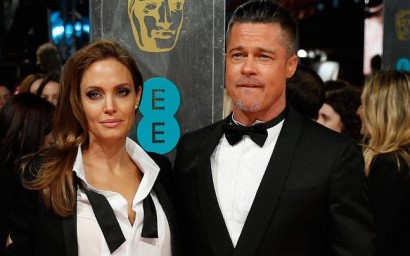What Happened?
Though I don’t normally write a lot about pop culture, I’m at work on a piece about how New Yorkers are leading the way in getting married later in life, and arguing that this is a positive development if the reasons for it are that people know themselves better, know better what qualities they need in a potential partner, and know what can work for them.
So it’s too bad for me that this week’s celebrity news is the divorce of Angelina Jolie and Brad Pitt. (Too bad for them, too, obviously).
Looking at Brad and Angelina’s divorce, it is tempting to be skeptical, to say, they waited all that time to get married (she was in her late 30’s, he was around 50), and it failed, anyway. Hard not to think, maybe they were too career obsessed and/or set in their ways, and to wonder, would things have gone more smoothly had they met and married younger?
When you are young, after all, it seems like you are more malleable, more open, and more eager, even, to compromise.
Also, early reports are that Brad was in the throes of that most undignified of stages: the midlife crisis.
Still, I have hope for later in life marriages and committed partnerships, and here is why.
From observing long married couples carefully, happy ones, it seems clear to me that ability to compromise, to give, and to be present for another individual, are universal pluses when it comes to good odds of committed happiness.
But the reality also is, there are all different types of marriages, from what I can see, including ones in which one partner does more of certain types of giving, and both parties are ok with that. In one kind of marriage, for instance, perhaps the woman tends to provide most of the emotional support, and is the primary giver of attention toward the child or children (Donald and Melania, anyone?) and is ok with that, because the man is the financial provider. I’ve observed marriages in which one partner is more in love than the other, and somehow it works for both parties. In other words, it’s not always objectively fifty fifty, or even close, in terms of love and devotion, but what seems to often matter most is that people are satisfied with what they have from their partner.
My working theory is that perhaps, when people are self-aware enough to know what they need – are objective about what what will truly satisfy them – and have solid enough self-esteem to go after it, when they can maintain their standards about what really matters to them and perhaps relax their standards in terms of what is more superficial – they have the best chance at happiness. Therefore, odds of achieving happiness in committed partnership may increase as a person ages if that person is truly self-aware. Congruently, if self-awareness increases, a person with the self-confidence and self-awareness to be honest about what she or he needs and is not cut out for marriage would come to terms with that as well.
So maybe what matters most is not so much the age of the individual as that person’s self awareness.
I was speaking with Manhattan psychiatrist Will Winter about this tonight.
I asked Winter, if staying single for longer allows New Yorkers in the 40’s and 50’s to self-actualize more, does it make it more likely they will make a good match if and when they finally settle down?
Turns out that divorce rates for couples who marry later are indeed lower – but those divorce rates rise after you get past the early 30s, meaning, people who get married quite a bit outside the typical curve do have higher divorce rates.
But that may not be the whole story.
Winter agreed, based on his observations and anecdotal experience, with my hunch that some of the best marriages and committed partnerships occur between people who meet comparatively later, in their 40’s and 50’s. The reason? Older people tend to be more more self-aware and have higher self-esteem. And higher self-esteem, in Winter’s view, means people are less likely to choose romantic partners based on need, and more likely to choose based on want.
Because younger people tend to have lower self-esteem, Winter explains, they tend to place more stress on external markers of success – physical appearance and money – in their choice of mates than older singles do.
“We are attracted to the things we wish we could be, and repelled by the things we don’t like in ourselves,” said Winter. “That is less true, though, as we age and mature and start to love ourselves and accept ourselves more. When we are older we choose more on basis of the personality fit and how we enjoy spending time with the person, as opposed to the person’s perceived status.”
Not sure how Angelina and Brad might be analyzed in light of this perspective, but one possibility might be that their attraction was based more heavily on the ego boost each received from loving and being seen with the other than from a deep-rooted compatibility, and that as they – or at least Angelina – matured, that became less sustainable. (There are reports that a clash of values triggered the split).
More to come.
This entry was written by Heather Robinson and posted on September 21, 2016 at 12:01 am and filed under Blog. permalink. Follow any comments here with the RSS feed for this post. Keywords: Angelina Jolir, Brad Pitt, divorce, late marriage. Post a comment or leave a trackback: Trackback URL. */?>




